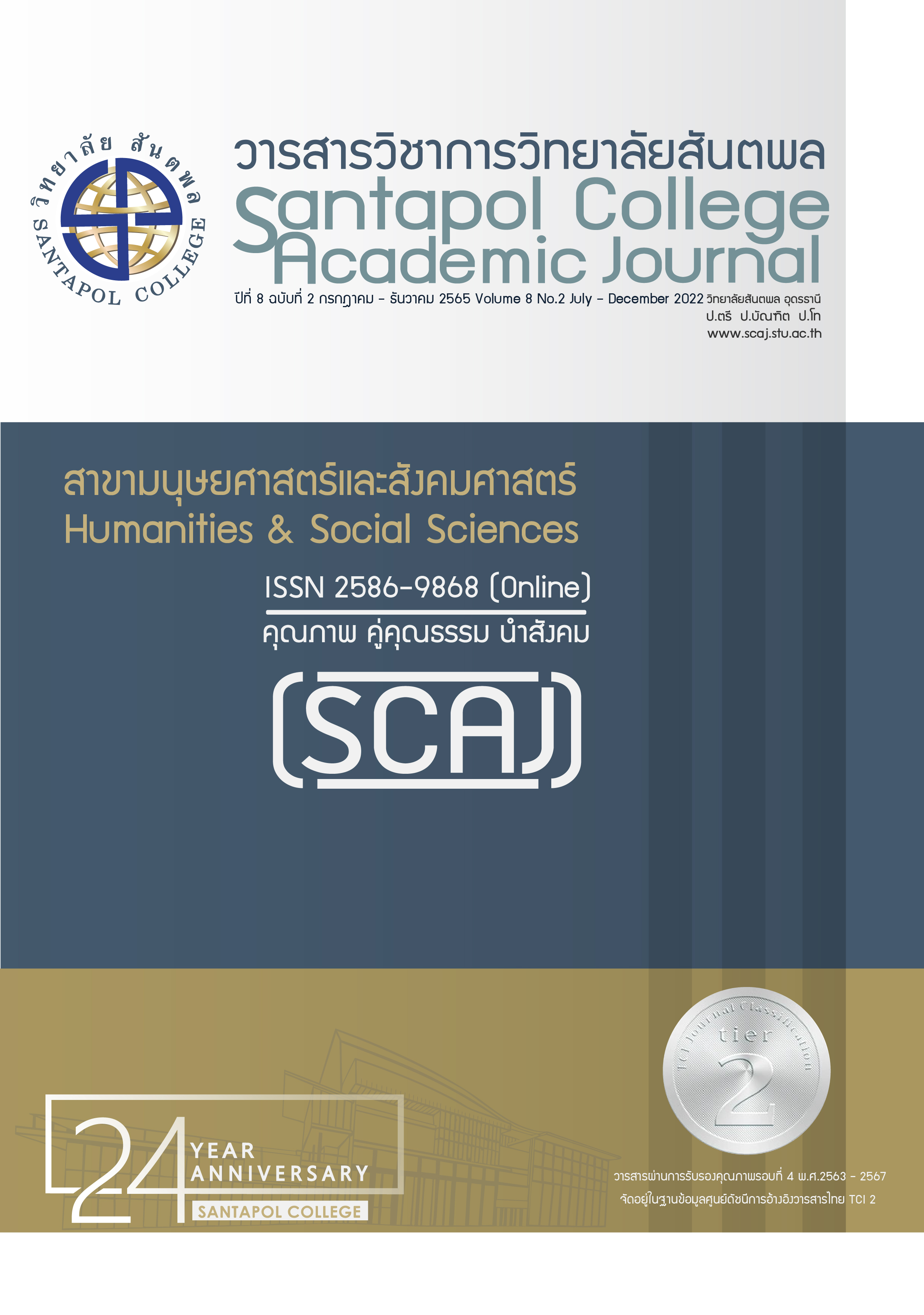WORK SOCIALIZATION TOWARD INNOVATOR
Main Article Content
Abstract
This article has an objective to educate about work socialization toward innovator. There are important periods which are 1) preparation time before entering the profession. Family institution has an important role in nurturing and creating an atmosphere of creativity which is the basis for creating innovator. Followed by educational institutions, which play a role in work socialization that will develop workforce to be able to create innovator; and 2) working and beyond period, who play an important role in work socialization towards innovator are work groups, which are colleagues, supervisors, and advocacy of organizational culture that encourages the creation of innovation. In addition, informal transfer can create innovator, the key factor is the way to transfer social norm in the workplace, starting from the period prior entering the work profession. The organization must have a selection method for obtaining human resources that can create innovation. Furthermore, when employees have come to work in the organization, the organization must have guidelines for work socialization so that employees can create innovation. Agent in the broadcast must be predetermine when broadcasting content and methods of transfer that are appropriate in each context of the organization so that employees can be developed to create innovator. This research will provide usefulness for organizations in the social transfer in the workplace to develop employees, who would be able to create innovation to the organization. This research severs as a guideline for further research in the future.
Article Details

This work is licensed under a Creative Commons Attribution-NonCommercial-NoDerivatives 4.0 International License.
เนื้อหาและข้อมูลในบทความที่ลงตีพิมพ์ในวารสารวิชาการวิทยาลัยสันตพล ถือว่าเป็นข้อคิดเห็นและความรับผิดชอบของผู้เขียนบทความโดยตรง ซึ่งกองบรรณาธิการวารสารไม่จำเป็นต้องเห็นด้วยหรือรับผิดชอบใดๆ
References
งามตา วนินทานนท์ (2545). การถ่ายทอดสังคมกับพัฒนาการของมนุษย์. สถาบันวิจัยพฤติกรรมศาสตร์. กรุงเทพฯ: มหาวิทยาลัยศรีนครินทรวิโรฒ.
ฐาศุกร์ จันประเสริฐ และ ณัฐพงษ์ ธรรมรักษาสิทธิ์. (2558). การถ่ายทอดสังคมเชิงวิชาชีพ : กระบวนการพัฒนาสู่ความเป็นมืออาชีพในชีวิตการทำงาน. วารสารพฤติกรรมศาสตร์, (21)1, 193-205.
ตรีทิพ บุญแย้ม. (2554). ปัจจัยเชิงสาเหตุพหุระดับที่มีอิทธิพลต่อพฤติกรรมสร้างนวัตกรรมระดับบุคคล และระดับกลุ่มงานเพื่อสร้างนวัตกรรมผลิตภัณฑ์ในบริษัทเอกชนไทย. กรุงเทพฯ : มหาวิทยาลัยศรีนครินทร์วิโรฒ.
นฤชา ศิริวัฒน์. (2556). รูปแบบการพัฒนาบุคลากรสู่การเป็นนวัตกร. กรุงเทพฯ: มหาวิทยาลัยรามคำแหง.
พยัต วุฒิรงค์. (2559). การบริหารทรัพยากรมนุษย์ในทศวรรษหน้า.กรุงเทพฯ: ศูนย์หนังสือ จุฬาลงกรณ์มหาวิทยาลัย.
พูลสวัสดิ์เผ่าประพันธ์. (2557). B2B เคล็ดลับกระบวนการสร้างสรรค์นวัตกรรม. ค้นเมื่อ 15 กุมภาพันธ์ 2564, จาก http://www.7innovationawards.com/knowledge/detail-610.
แพรววิไล จันทร์บุญ และ กล้าหาญ ณ น่าน. (2564). การรับรู้การสนับสนุนจากองค์การและแรงจูงใจที่มีอิทธิพลต่อผลการปฏิบัติงานของข้าราชการธุรการกรณีศึกษา : สำนักงานอัยการสูงสุด. วารสารวิชาการวิทยาลัยสันตพล, 7(2), 9-17.
ภานุกา แจ่มดอน. (2551). กระบวนการเข้าสู่อาชีพและสภาพการทำงานของผู้รับงานไปทำที่บ้าน : กรณีศึกษาผู้รับงานไปทำที่บ้านในกิจการตัดเย็บเสื้อผ้าชุมชนจิตภาวรรณ เขตสายไหม กรุงเทพมหานคร. กรุงเทพฯ : มหาวิทยาลัยราชภัฏจันทรเกษม.
วรวุธ มัสพันธ์. (2556). ปัจจัยทางจิตสังคมที่ส่งผลต่อความคิดสร้างสรรค์ของนักเรียนช่วงชั้นที่ 2 ในโรงเรียนสังกัดกรุงเทพมหานคร. กรุงเทพฯ : มหาวิทยาลัยศรีนครินทร์วิโรฒ.
วิรัติ ปานศิลา. (2542). การถ่ายทอดสังคมในการทำงาน จิตลักษณ์ และการรับรู้เกี่ยวกับบทบาทที่สัมพันธ์กับพฤติกรรมการทำงานของบุคลากรสาธารณสุขระดับตำบล ในภาคเหนือของประเทศไทย. กรุงเทพฯ : มหาวิทยาลัยศรีนครินทร์วิโรฒ.
สุวิทย์ เมษินทรีย์. (2559). สัมภาษณ์สุวิทย์ เมษิณทรีย์ Thailand 4.0. ค้นเมื่อ 26 ธันวาคม 2563, จากhttps://issu.com/adaybulletin/docs/adb431.
เสาวณี จันทะพงษ์ และขวัญรวี ยงต้นสกุล. (2559). “นวัตกรรม”: แรงขับเคลื่อนใหม่ของเศรษฐกิจไทย. ค้นเมื่อ 20 มกราคม 2564, จาก https://www.bot.or.th/Thai/ResearchAadPublications/DocLib_/Article19_07_59.pdf.
Allen, N.J., & Meyer, J.P. (1990). The Measurement and Antecedents of Affective, Continuance, and Commitment to the Organization. Journal of Occupational Psychology, 53, 337-318.
Champoux, J. E. Z. (2000). Organizational Behavior: Essential Tenets for a New Millennium. Singapore: South-Western College Publishing.
Chao, G. T., O'Leary-Kelly, A. M., Wolf, S., Klein, H. J., & Gardner, P. D. (1994). Organizational socialization: Its content and consequences. Journal of Applied Psychology, 79(5), 730–743.
Deaux, K. & Wrightsman, L. S. (1988). Social psychology (5th ed). Monterey, CA: Brooks/Cole.3.
Drucker, Peter F. (1991). The Discipline of Innovation. Innovation: Harvard Business Review Paperback. MA: Harvard Business School Publishing Division.
Dyer, J. H., Gregersen, H. B., & Christensen, C. M. (2009). The innovator's DNA. Harvard business review, 87(12), 60–128.
Feldman, D. C. (1981). The Multiple Socialization of Organization Members. The Academy of Management Review, 6(2), 309-318.
Fisher, C. D. (1986). Organizational Socialisation an Integrative Review. Research in Personnel and Human Resources Management, 4, 101-145.
Gelb, M. J., & Caldicott, S. M. (2007). Innovate Like Edison: The Five-Step System for Breakthrough Business Success: Penguin Publishing Group.
Işık, C., Aydın, E., Dogru, T., Rehman, A., Alvarado, R., Ahmad, M., & Irfan, M. (2021). The Nexus between Team Culture, Innovative Work Behaviour and Tacit Knowledge Sharing: Theory and Evidence. Sustainability, 13(8), 4333.
Katz, D., & Kahn, R.L. (1978). The Social Psychology of Organizations. New York: Wiley.
Kim, M.-S., & Koo, D.-W. (2017). Linking LMX, engagement, innovative behavior, and job performance in hotel employees. International Journal of Contemporary Hospitality Management, 29(12), 3044-3062.
Klein, H.J., & Weaver, N.A. (2000). Effectiveness of an Organizational-level Orientation Training Program in The Socialization of New Hires. Personnel Psychology, Inc., 53, 47-66.
Krause, D.E. (2004). Influence-based Leadership as a Determinant of The Inclination to Innovate and of Innovation-Related Behaviors: An Empirical Investigation. Leadership Quarterly, 15(1), 79-102.
Lee, J.; Oh, S., & Burnett, G. (2016). Organizational Socialization of Academic Librarians in the United States. The Journal of Academic Librarianship, 42, 382-389.
Mathisen, G, & Einarsen, S. (2004). A Review of Instruments Assessing Creative and Innovative Environment within Organizations. Creativity Research Journal, 119-140.
Sazabdrusgvuli, N. (2009). Contextual and Personal Antecedents of Innovative Behavior Mediation Effect of Learning Goal Orientation on The Relationship between job Anatomy and Innovative Behavior. Master Thesis Project. University of Twente. USA.
Schein, E. H. (1971). The Individual, the Organization, and the Career: A Conceptual Scheme. The Journal of Applied Behavioral Science, 7(4), 401–426.
Sethi, R., Smith, D. C., & Park, C. W. (2001). Cross-Functional Product Development Teams, Creativity, and the Innovativeness of New Consumer Products. Journal of Marketing Research, 38, 73 - 85.
Stryker. S. (1978). Symbolic Interaction an Approach to Family Research In Symbolic Interaction. A Reader in Social Psychology 3rd Manis, Jenome G; & Meltzer, Bernard N.. (Eds). Boston.
Super, D. E. (1975). Career Education and Career Guidance for the Life Span and for Life Roles. Journal of Career Education, 2(2), 27–42.
Super, D.E. (1990). A Life-Span, Life-Space Approach to Career Development. In D. Brown, L. Brooks & Associates (eds.) Career Choice and Development: Applying Contemporary Theories to Practice (2nd ed., pp. 197-261). San Francisco, CA: Jossey-Bass.
Van Maanen, J., & Schein, E. H. (1979). Toward a Theory of Organizational Socialization. Research in Organizational Behavior, 1, 209-264.
Waldeck, J., & Myers, K. (2008). Organizational Assimilation Theory, Research, and Implications for Multiple Areas of The Discipline: A State of The Art Review. Inc. Lawrence Erlbaum Associates Inc.


